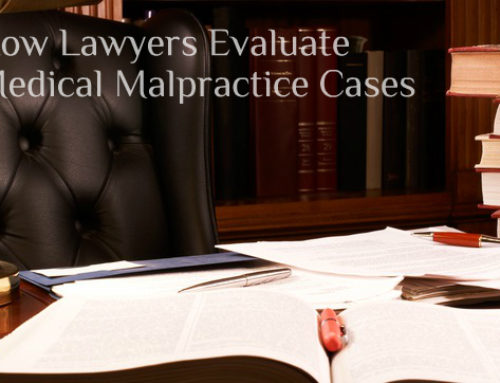The Doctors Company, an insurer owned by physicians, completed a study of 429 cardiology claims for damages. It was the goal of the study to further educate cardiologists on what might constitute risky patient handling, and how to best avoid these problems altogether. Below are the top five causes of action, as listed in the legal complaints against cardiologists, and the percentage (%) that each of these causes of action were claimed in these suits:
Improper Diagnosis, or delaying a diagnosis (25%)
Failure to diagnose myocardial infarction (MI), or commonly known as heart attacks, was the leading cause of action in lawsuits in this category. Identifying MI cases are complicated by the variety of differences in individuals presenting symptoms. Each patient is unique and their symptoms can differ patient to patient. In addition, the lack of definitive diagnostic testing may cause a lack or delay in MI diagnosis. One of the most common of conditions that may mimic MI is aortic dissection.
In addition, many claims in the study involved patients who presented for ischemic heart disease, which can normally be considered relatively close to the MI. The correct diagnosis might be delayed because a doctors might feel a false sense of security when evaluating a patient with MI-related symptoms. It might also make the patient think that a diagnosis or treatment option might have been overlooked by the physician, “even though a normal ischemic work-up does not preclude a later event.”
It is important for a treating physician to manage the expectations of the patient as well as to educate the patient about MI and risk management.
Improper performance of a treatment or procedure and/or improper performance of surgery (23%)
“It’s inevitable that there are going to be some complications even among the most experienced and most competent operators,” said Sandeep Mangalmurti, a cardiologist who examined these cases and causes of actions in detail. Of course, physicians are trained extensively on patient acknowledgements of treatment options and the repercussions of patient decisions on those treatment options. The risks of a particular treatment or surgical option are discussed with the patient prior to the implementation of the treatment, physicians usually require signatures from the patient as a symbol of understanding of these risks.
The reasons for lawsuits based on these claims for relief do not involve the complication in treatment or surgery itself, but rather because of the way the physician or office staff handled the complication. It is the action or failure to act in response to a particular procedural or treatment protocol complication that lands the doctor in hot water. The standard of care in medical malpractice is “reasonable” care, therefore, physicians are held to a standard of care that a reasonable physician in the same circumstances would be held to. Did the cardiologist act as a most cardiologists would act in the same or similar circumstances? Physicians are not infallible and how any complication is handled is as important to avoiding a lawsuit as it the complication itself.
Improper management of treatment (14%)
This category is less clearly defined as these causes of action could be instigated because of any one of a dozen management points in the evolution of a patient/doctor relationship. Again, to best avoid such mistakes, it is highly recommended that the physicians implement strict standards of record keeping and patient hand-offs in the office and hospital room. Proper record keeping will undoubtedly assist in the defense of such causes of action. . It was recommended that to avoid improper management claims that a physician’s practice follow well defined management and patient record handling processes. In particular when there is a shift change involved it is important that the information gleaned from patient contact by the first physician be transferred to the patient’s records and personally discussed with the subsequent doctors.
Practice infrastructure and standardized processes need to be implemented at all levels of care, and these processes need have redundancy in both electronic and written medical recording.
Improper medication management (6%)
“By far, the medications that we need to be aware of as cardiologists from a liability perspective are anticoagulants,” Mangalmurti said, noting that the claims are related almost exclusively to bleeding complications.
Many patients will need to be placed on anticoagulant medicines, Warfarin and Amiodarone, are two such prescriptions used. The use of these medications raises the physician’s risk of liability without question, however, if the patient is in need of such anticoagulants, prescriptions needed to be given to the patients. It is important that physicians be aware of any developments in standard of care that can be found in publications and websites frequently used by those in the cardiologist community.
As information on medication becomes available, it is important to update the protocols related to patient acknowledgements. It is also suggested that specific notes be made in the patient files as to what medications were discussed and what was understood by the patient as to the benefits and side-effects.
How to avoid lawsuits in some cases
Dr. George Rogers, co-chair of the American College of Cardiology Board of Trustees Work Group on Medical Professional Liability Insurance, stated, “I think we have to acknowledge that no one is perfect, no one is going to get the right diagnosis every time right off the bat, and all of our procedures have complications even in the best of hands and in the most experienced centers, and so those things are going to happen,”
When a patient and their families are fully informed as to the potential risks of a procedure or treatment and when something happens that brings a less-than optimal result, it is important that information on the complication be passed on as soon as possible. Most suits take place after a period of time when the patient or family feels that they are being ‘brushed-off’ or lied to. It is important that the medical community ‘man-up’ to these complications in order to keep lawsuits to a minimum.
“But the thing that we do have control over as physicians and healthcare providers is the way that we interact with our patients and the families,” he said. “And I think that communication can really be the important before the procedure, after the procedure, after the treatment, during the process, the whole thing.” Dr. Rogers said.
If you have any questions about this article, or feel that you’ve been a victim of malpractice, contact us today. We’re here to help.













